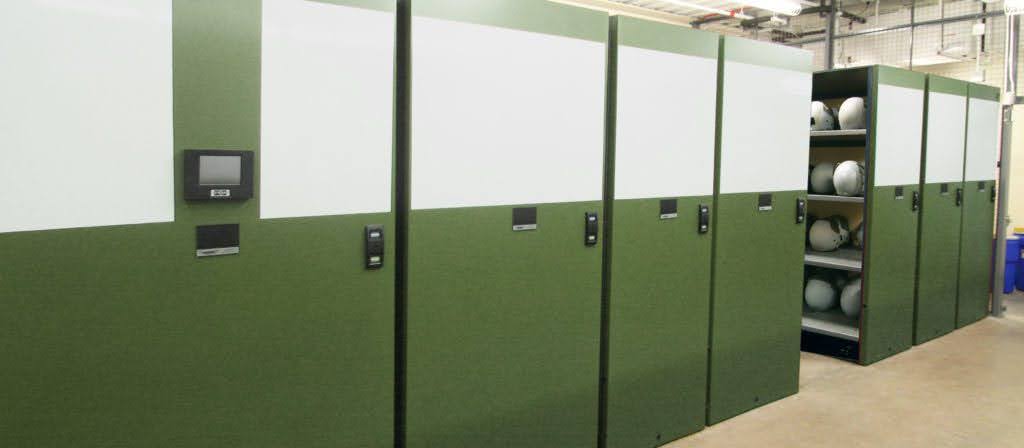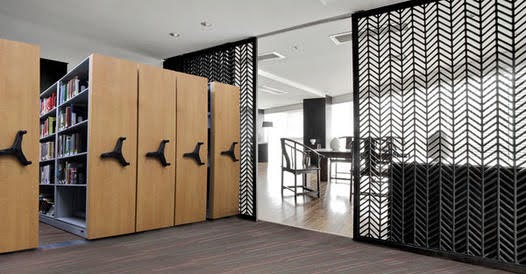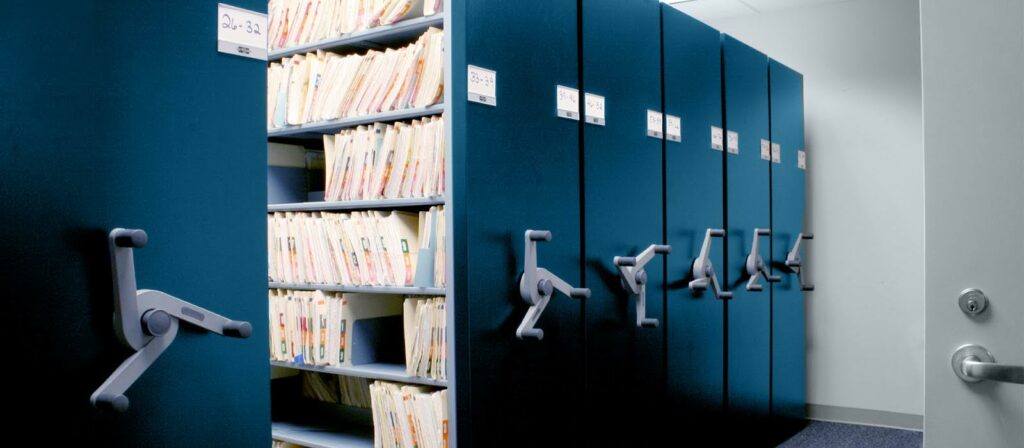
In an era where technology continuously evolves, law enforcement agencies face increasing pressure to manage their resources more effectively while ensuring the highest standards of security and accountability. Traditional legal file storage solutions and basic storage shelving solutions no longer meet the sophisticated demands of modern policing. This has led to the adoption of law enforcement lockers equipped with smart technology—offering a myriad of benefits that go beyond simple storage. Here’s why these smart lockers are becoming an essential part of law enforcement operations.
1.Enhanced Security and Evidence Management
One of the most compelling reasons for law enforcement agencies to invest in smart lockers is the enhanced security they offer, particularly in managing evidence. In criminal investigations, the integrity of evidence is paramount, and any breach in security can jeopardize an entire case. Law enforcement lockers embedded with smart technology provide a robust solution to this issue. These lockers are equipped with advanced access controls, such as biometric authentication, which ensure that only authorized personnel can access sensitive materials.
Moreover, these lockers can be integrated with existing legal file storage solutions, providing a seamless system that tracks every interaction with the stored items. This real-time tracking helps in maintaining a precise log of who accessed what and when. The ability to monitor locker activity 24/7 significantly reduces the risk of tampering or unauthorized access, thus ensuring that the chain of custody remains intact—a critical aspect when dealing with evidence.
In contrast to traditional storage shelving solutions, smart lockers offer an added layer of security that is not just physical but also digital. This dual-layer protection is especially crucial in scenarios where evidence needs to be stored over long periods, maintaining its integrity until it is required in court. By leveraging these advanced features, law enforcement agencies can avoid the pitfalls associated with manual evidence management, such as lost files or unauthorized tampering, thereby safeguarding the integrity of their investigations.
2.Improved Efficiency and Time Management

In any law enforcement agency, time is often of the essence. Officers and investigators need quick and efficient access to equipment, documents, and evidence to perform their duties effectively. Traditional storage methods, whether it’s storage shelving solutions or basic storage cabinets for schools, often require personnel to spend valuable time locating the items they need. This inefficiency can be particularly detrimental in situations where rapid response is critical.
Smart lockers streamline this process by automating the retrieval and return of items. For instance, an officer can quickly retrieve a piece of equipment or a file by simply authenticating their identity, and the locker will automatically open the designated compartment. This eliminates the need for manual searches and reduces the time spent on administrative tasks, allowing officers to focus more on their core responsibilities.
Furthermore, the integration of smart technology allows for better inventory management. Every item stored in the lockers is tagged and tracked, enabling real-time updates on the availability of resources. This feature is particularly beneficial for managing shared equipment, as it reduces the chances of double-booking or misplaced items. In turn, this improved efficiency directly contributes to better resource allocation and enhanced operational effectiveness within the agency.
By replacing outdated library storage systems and other traditional methods with smart lockers, law enforcement agencies can significantly cut down on the time spent managing their inventory. This time-saving benefit not only enhances day-to-day operations but also improves the overall productivity of the agency, leading to faster response times and more effective law enforcement.
3.Improved Chain of Custody
Maintaining an unbroken chain of custody is essential in law enforcement, especially when handling evidence. Any gaps or inconsistencies in the documentation of evidence handling can result in the dismissal of crucial evidence in court, potentially jeopardizing entire cases. This is where smart lockers make a significant difference.
Smart lockers are designed to maintain a meticulous record of every interaction with stored items. Whether it’s a piece of evidence, an important file, or sensitive equipment, the locker system logs every access attempt, including the identity of the person accessing it, the time, and the specific item retrieved or returned. This detailed logging ensures that the chain of custody is not only maintained but also verifiable at any given moment.
The ability to automatically document these interactions removes the human error factor associated with traditional methods, such as paper logs or manual data entry, which can be easily manipulated or forgotten. Additionally, the integration of smart lockers with legal file storage solutions allows for a comprehensive approach to managing both physical and digital evidence, ensuring that all aspects of the chain of custody are covered.
This level of accountability is crucial for maintaining the integrity of law enforcement agencies, particularly when presenting evidence in court. By leveraging smart lockers, agencies can ensure that their chain of custody is not only preserved but also enhanced, reducing the risk of evidence tampering and ensuring that justice is served.
4.Customization and Scalability

Another reason why law enforcement agencies are increasingly adopting smart lockers is their customization and scalability. Unlike traditional storage cabinets for schools or library storage systems, which are often rigid and limited in their design, smart lockers offer a high degree of flexibility to meet the specific needs of each agency.
Smart lockers can be customized to accommodate a wide range of items, from small evidence bags to large tactical equipment. This adaptability is particularly beneficial for agencies that need to store diverse items in one location. For example, a single smart locker system can include compartments for weapons, electronics, documents, and personal effects, each with its own security and tracking features. This level of customization ensures that all items, regardless of size or type, are stored securely and efficiently.
Moreover, smart lockers are scalable, meaning they can grow with the needs of the agency. As the agency expands or its storage needs evolve, additional locker units can be easily integrated into the existing system without requiring a complete overhaul. This scalability is not just about adding more lockers; it also includes the ability to upgrade the software and hardware components, ensuring that the system remains up-to-date with the latest security protocols and technology advancements.
This combination of customization and scalability makes smart lockers an ideal solution for law enforcement agencies of all sizes. Whether it’s a small police department or a large federal agency, smart lockers can be tailored to meet their specific storage and security needs, providing a future-proof solution that adapts to changing requirements.
5.Accommodate a Wide Range of Equipment
In the dynamic and demanding world of law enforcement, the range of equipment that needs to be stored securely is vast. From weapons and tactical gear to evidence and legal documents, each item requires a specific type of storage solution. Traditional storage methods, such as basic storage shelving solutions or library storage systems, often fall short in providing the necessary security and organization required for such diverse items.
Smart lockers, however, are designed to accommodate this wide range of equipment effectively. These lockers can be configured with different compartment sizes and security features to store various types of equipment securely. For example, weapons can be stored in lockers with biometric access controls, ensuring that only authorized personnel can access them, while sensitive documents can be stored in temperature-controlled compartments to prevent degradation over time.
Additionally, the smart technology embedded in these lockers allows for real-time monitoring of stored items. This feature is particularly beneficial for high-value equipment, as it provides instant alerts in case of unauthorized access or if an item is not returned on time. This level of control and oversight is crucial in ensuring that all equipment is accounted for and maintained in optimal condition.
Furthermore, smart lockers can be integrated with the agency’s inventory management systems, providing a unified platform to track and manage all stored items. This integration allows for seamless coordination between different departments, ensuring that equipment is readily available when needed and that there is no overlap or confusion in its allocation.
By accommodating a wide range of equipment and offering advanced monitoring and security features, smart lockers provide law enforcement agencies with a comprehensive storage solution that meets their complex and diverse needs. This capability not only enhances operational efficiency but also ensures that all equipment, whether it’s a weapon or a legal document, is stored safely and securely, ready for use at a moment’s notice.
Conclusion
Smart lockers are revolutionizing the way law enforcement agencies manage their resources. From enhancing security and maintaining the chain of custody to improving efficiency and offering scalability, these lockers offer a comprehensive solution that meets the unique demands of modern policing. As law enforcement continues to evolve, the adoption of smart lockers will undoubtedly play a critical role in ensuring that agencies can operate at their highest potential, safeguarding both their resources and the communities they serve.
